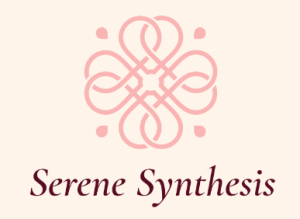Introduction: The Old Labels No Longer Fit
For decades, leadership was defined in simple categories: autocratic, democratic, laissez-faire. These labels worked in a command-and-control era, where hierarchy ruled and efficiency was the goal.
But today’s workplaces are different. They are multicultural, fast-changing, and emotionally complex. Teams thrive on collaboration, innovation, and shared ownership. In this reality, the old boxes no longer fit. Leadership today isn’t about picking a fixed style—it’s about adaptability, emotional intelligence, and presence.
From Yesterday’s Playbook to Today’s Nuance
Kurt Lewin’s early model—autocratic, democratic, laissez-faire—was a breakthrough in understanding leadership dynamics. Later, transformational and transactional leadership expanded the conversation, focusing on vision, motivation, and reward.
Yet even these models fall short in a modern environment where leaders must constantly shift roles. A successful leader today may need to be directive in a crisis, supportive in a brainstorming session, inclusive in decision-making, and emotionally grounded in conflict. Modern leadership is less about one style—and more about the agility to move between them.
The Neuroscience of Adaptive Leadership
Leadership is not just a behavior—it’s a brain function. Neuroscience shows us that adaptive leadership is rooted in how our brains process social cues.
- Mirror neurons help us sense team energy and mood.
- Empathy circuits align us with others’ emotional rhythms.
- Neuroplasticity allows us to “rewire” our responses to lead with clarity and trust.
As Harvard Business Review notes on the neuroscience of trust, leaders who foster connection and adaptability create measurable impact on team performance and engagement. When leaders adapt flexibly, they’re not simply changing behavior. They’re building neural pathways that strengthen presence, resilience, and connection.
Modern Leadership Styles: Beyond Typology
- Situational Leadership
No single approach works every time. As Hersey and Blanchard note, effective leaders adapt—sometimes telling, sometimes supporting, often delegating—depending on the team’s readiness and capability. - Servant & Authentic Leadership
Rooted in service and integrity, this style values empowerment and trust. Leaders who lead authentically inspire deeper engagement and create cultures of consistency and care. - Distributed & Shared Leadership
Leadership today is not a solo act. By distributing responsibility and enabling others to lead, organizations build collective accountability—driving innovation and inclusivity. - Ambidextrous Leadership
The hallmark of adaptability. Leaders balance exploration (creativity, innovation) with exploitation (operational excellence). This dual capacity enables both growth and stability.
The Center for Creative Leadership’s research on adaptable leadership explains the cognitive, emotional, and dispositional flexibility leaders need to shift behaviors and experiment confidently under pressure—reinforcing why rigid typologies no longer serve modern workplaces.
How to Identify Your Leadership Type: A Reflective Guide
- 360-Degree Feedback
Go beyond KPIs—ask trusted peers how your leadership feels in action. - Leadership Self-Assessments
Use evidence-based tools to map emotional maturity, adaptability, and strategic orientation. - Scenario Testing
Observe how your style shifts in different contexts—from crisis response to long-term planning to team creativity.
Why This Matters: The Modern Workplace Context
In the UAE and globally, workplaces are becoming more multicultural, fast-paced, and expectation-rich. Yesterday’s transactional clarity no longer works. Teams today need leaders who can guide, empower, and adapt—sometimes all in a single meeting. Your leadership style isn’t only about you—it shapes trust, culture, and innovation across your team and organization.
How Serene Synthesis Helps Leaders Recalibrate
At Serene Synthesis, we help leaders rediscover and refine their leadership identity through:
- Clarifying their natural leadership strengths—and where adaptability matters most
- Deepening emotional intelligence to align intention with impact
- Practicing real-time style calibration for clarity, connection, and flow
Our coaching frameworks blend evidence-based models with reflective practices—so leaders can lead with both head and heart.
Final Reflection
Leadership today is not defined by legacy labels. It’s defined by how you show up in the moments that matter. If your leadership feels mismatched, misunderstood, or stuck, recalibration isn’t just possible—it’s essential. It begins with understanding who you are now, and who you are becoming.Your leadership identity is not fixed. It’s evolving—just like the teams you lead.


